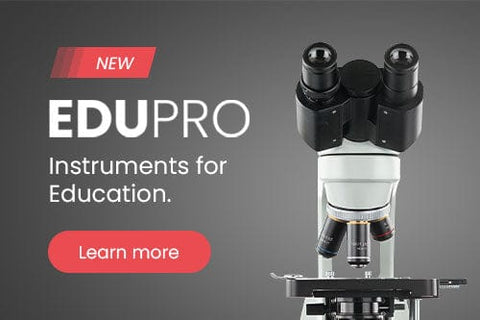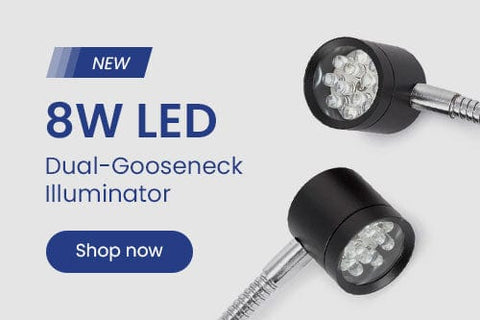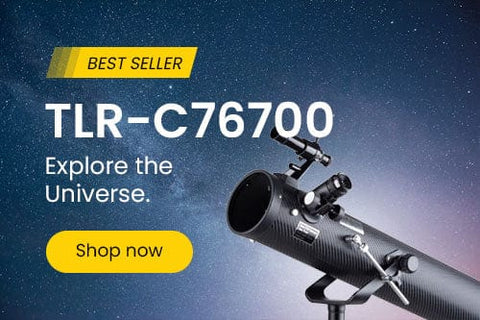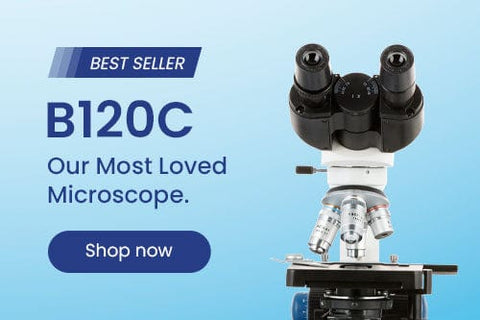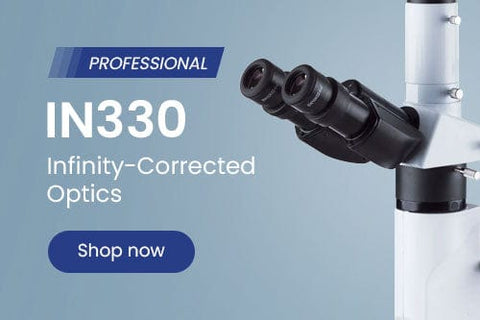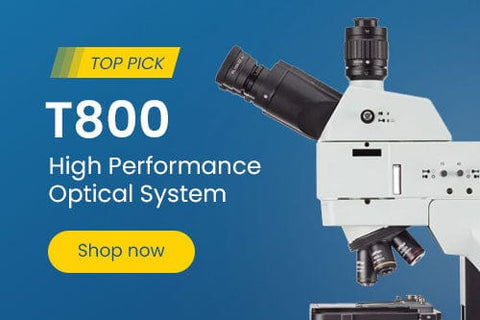- Microscopes
- Cameras
- Lab Supplies & Equipment
- Shop By Brand
- Lab Supplies by Category
- Analyzer Consumables
- Balances
- Bags
- Beakers
- Bench Scale Bases
- Bottles
- Bottletop Burettes
- Bottletop Dispensers
- Boxes
- Blank Microscope Slides & Cover Slips
- Blood Collection
- Caps
- Carboys
- Centrifuges
- Centrifuge Tubes
- Cold Storage
- Containers
- Cryogenic Vials
- Culture Tubes
- Cylinders
- Dispensers
- Digital Dry-Baths
- ESR Products
- False Bottom Tubes
- Flat Bottom
- Funnels
- Gel Documentation
- Glassware
- Glass Test Tubes
- Histology
- Homogenizers
- Hotplates-Stirrers
- Inoculation Loops and Spreaders
- Liquid Handling Products
- Manual-Electronic Pipettors-Pipettes
- Microscope Slides
- Overhead Stirrers
- Pipette Controller (Serological Filller)
- Pipette Tips
- Plastic Test Tubes
- PCR Tubes, Strips & Plates
- Racks
- Repeater Pipettor
- Rockers
- Rotary Evaporators
- Serological Pipettes
- Shakers
- Spectrophotometers
- Syringe Tips
- Sample Tubes
- School/Classroom Supplies
- Screwcap Test Tubes
- Self-Standing
- Test Tube Racks
- Test Tubes & Vials
- Transport & Storage Tubes
- Thermal Mixers
- Transfer Pipets
- Urinalysis
- Vacuum Pumps
- Weighing Dishes
- Lab Equipment
- Balances
- Bench Scale Bases
- Centrifuges
- Digital Dry-Baths
- Gel Documentation
- Homogenizers
- Hotplates-Stirrers
- Overhead Stirrers
- Pipettors
- Rockers
- Rotary Evaporators
- Shakers
- Serological Pipettes
- Spectrophotometers
- Thermal Mixers
- Vacuum Pumps
- Liquid Handling Products
- Manual-Electronic Pipettors-Pipettes
- Pipette Tips
- Racks
- Pipette Fillers-Controllers
- Repeater Pipettor
- Syringe Tips

Cost effective products and solutions designed to improve laboratory efficiency, safety and results.
SHOP BENCHMARK SCIENTIFIC >
- Slides & Accessories
- Slides
- Cameras
- Illuminators
- Adapters
- Eyepieces / Objectives
- Bulbs
- Magnifying Lamps
- Monitors and Tablets
- View All Categories
- Adapters
- DSLR Adapters
- USB Camera Adapters
- Ring Light Adapters
- Power Adapters
- Barlow Lens
- Books & Experiments Cards
- Bags & Cases
- Bags
- Cases
- Cameras
- Circuit Board Holders
- Cleaning Kits
- Condensers
- Darkfield
- Phase Contrast Kits
- Polarizing Kits
- Dust Covers
- Eye-Guards
- Eyepieces
- 20mm
- 23mm
- 30mm
- 30.5mm
- Filters
- Microscope Filters
- Illuminator Filters
- Fluorescence Kits
- Conversion Kits
- Filter Cubes
- Focusing Racks
- Fuses
- Illuminators
- Bulbs
- LED Illuminators
- Fiber Optic Illuminators
- Fluorescent Illuminators
- Ring Lights
- Stand Lights
- Goosenecks
- Gooseneck Attachments
- Immersion Oils
- Loupes
- Magnifying Lamps
- Clamp Lamps
- Desktop Lamps
- Rolling Stand Lamps
- Mechanical Stages
- Monitors and Tablets
- Calibration Slides & Stage Micrometers
- Stage Warmers
- Stain Kits
- Stands
- Articulating Arm Stands
- Boom Stands
- Table Stands
- Tweezers
- Other Accessories
- Shop By Industry
- Shop By Industry
- Botany
- Agronomy & Forestry
- Horticulture
- Phytopathology
- Chemistry
- Biochemistry
- Biotechnology
- Cannabis
- Pharmaceutics
- Consumables
- Beer & Wine
- Cosmetics
- Food & Beverage
- Electronics
- Circuit Boards & General Electronics
- Mobile Phone Repair
- Semiconductors & Wafers
- Environmental
- Asbestos
- Ecosystem Research
- Mud Logging
- Soil Treatment
- Water Treatment
- Forensics
- Ballistics
- Fingerprint Analysis
- Genetic Identification
- Hair & Fiber Analysis
- Handwriting Analysis
- Industrial
- Aerospace
- Automotive
- Dental Lab & Production
- Glass Industry
- Industrial Inspection
- Mechanical Parts
- Paper Industry
- Petrochemical
- Plastics
- Printing Industry
- Quality Assurance & Failure Analysis
- Textiles & Fibers
- Tool Making
- Wood Production
- Jewelry & Gemology
- Engraving
- Gemology
- Jewelry Repair
- Stone Setting
- Watch Repair
- Hobby
- Coins & Collecting
- Stamps
- Modeling & Assembly
- Sculpting
- Repair
- Telescopes
- Metallurgy
- Archaeology
- Geology
- Mining
- Petrology
- Medical & Microbiology
- Anatomopathology
- Bacteriology
- Biochemistry
- Cell Culture
- Cytology
- Dental Microbiology
- Dermatology
- Dissection
- Gout & Rheumatology
- Hair & Fiber Analysis
- Hair Transplant
- Fluorescence
- Hematology & Live Blood Analysis
- Histopathology
- Mycology
- Medical Devices
- Microsurgery
- Neuropathology
- Oncology
- Parasitology
- Pathology
- Semen Analysis
- Virology
- Veterinary & Zoology
- Breeding & Semen Analysis
- Entomology
- Fecal Smears & Floats
- Marine Biology
- Ornithology
- Veterinary Medicine
- Zoology
- Shop By Industry
- Students
- Telescopes
- Buy With Prime
- Sale
Explore The Gift Lab
- Compound Microscopes
- Shop By Brand
- AmScope
- Euromex
- Omax
- Shop by Head Type
- Binocular
- Monocular
- Trinocular
- Multi-head & Training
- Shop By Specialty
- Brightfield
- Darkfield
- Phase Contrast
- Inverted
- EPIfluorescence
- Polarizing
- Digital Integrated
- Metallurgical
- Shop By Application
- Education
- Research
- Veterinary
- Compound With Digital Head
- Shop Best Sellers
- Shop All Compound
- Stereo Microscopes
- Shop By Brand
- AmScope
- Euromex
- Shop By Objective Type
- Fixed Power
- Zoom Power
- Single Lens
- Common Main Objective
- Shop By Stand Type
- Articulating Arms
- Boom Stands
- Gooseneck Stands
- Table Stands
- Other Stands
- Shop By Head Type
- Binocular
- Monocular
- Trinocular
- Simul-Focal
- Shop By Industry
- Video Inspection
- Industrial Inspection
- Microscope Heads
- Shop Stands
- Articulating Arm
- Boom Stands
- Table Stands
- Stereo With Digital Head
- Shop Best Sellers
- Shop All Stereo
- Specialized Microscopes
- Digital Microscopes
- Kids, Student Microscopes
Cameras and Magnification
A common issue when using cameras in microscopy is matching the FOV (field-of-view) of the camera with that of the eyepieces. When addressing this issue, it will help to understand the difference between magnification and FOV, and why cameras do not add magnification.
Magnification and Field of View
Magnification: the process of enlargement; increasing the apparent size of an object's image, as through an optical system.
Field-of-view (FOV): the viewable portion of an object, as seen by the observer.
Two of the most important factors in microscopy are magnification and field-of-view (FOV). The two measurements are often calculated to be inversely-proportional, where increase in magnification results in decrease in FOV. Since eyepieces are designed to project an image of a relatively consistent size onto your eyes' retinas, higher magnifications will be progressively confined to a smaller FOV. This is why any change in FOV is seen as a change in magnification. Despite this perception, the two characteristics are not mutually dependent.
A microscope's FOV at any magnification is limited by a number of factors, including the objective lens, the tube-diameter of the microscope's internal optical-system, and the eyepieces. The eyepieces are typically the determining factor, which is why they should be marked with a field-number (FN), which represents the diameter of the field-stop (aperture), and therefore the FOV. Substituting a camera for eyepieces changes the most-limiting factor to the size of the image-sensor (or film, if you're so inclined). Changing any of these factors can alter the FOV without having any effect on magnification.
Cameras and Eyepieces

A rectangle's diagonal and a circle's diameter
Since digital cameras use rectangular image-sensors, and eyepieces are round, there is no direct equivalence when it comes to FOV. The best we can do is choose the most comparable dimensions, which is still a bit subjective. I choose to use the sensor's diagonal, because it would span the diameter of a containing circle. Calculating the diagonal requires a nostalgic revisiting of the Pythagorean Theorem: a2 + b2 = c2, where a is the sensor's width, b is the sensor's height, and c is the sensor's diagonal.

Pythagorean Theorem: a2 + b2 = c2
Finding the image-sensor's diagonal will give you a rough idea of how the image will compare in size to your eyepieces (using the field-number). If you are determined to see the same FOV when using a camera and eyepieces, then you should consider using eyepieces with field numbers comparable to the image-sensor's diagonal. One accessory that will make this easier is a reduction lens.
Reduction Lenses
When using a camera with an image-sensor smaller than your eyepiece field-number, it is common to use a reduction lens, which reduces the size of the image projected by the objective lens, so it will better fit the sensor. The rule-of-thumb for choosing a reduction lens is to match the lens' magnification (which would be fractional, ie. 0.5X) to the die-size of the image sensor. The die-size, which represents the size of the entire sensor-die, is not the same as the size of the photo-sensitive portion of the sensor, so it will not match the listed dimensions which are used for calculating FOV. The die-size is often represented as a fraction, such as 1/1.8". As confusing as this may seem, it's nevertheless an industry-standard. So a 1/1.8" sensor is best-paired with a 0.5X reduction lens, and a 1/3" sensor with a 0.3X lens. Image-sensor's of 1" or larger are in a different category, and would not use reduction lenses, unless the microscope's FOV exceeds 1", which would be rare.
While using a reduction lens can help maximize the FOV of the camera, it still does not mean that the camera's FOV will match your eyepieces.
Monitor Magnification
When viewing a camera's image on a monitor, the image-magnification is based on the relative size-difference between the camera's sensor and the monitor. To calculate the amount of magnification, measure the width or diagonal of the image on the monitor, then divide that number by the same dimension of the camera's sensor. So if a camera's image-sensor has a 1/2" diagonal, and the on-screen image has a diagonal of 23", then the monitor-magnification (mm) would be 46X. This only works if the entire image produced by the camera is seen on the monitor. If only a portion of the image is viewable, then the on-screen image will have to be reduced in size until it is fully visible.
To calculate the overall magnification with a microscope, multiply the objective magnification (mo) by the monitor-magnification (mm), as well as any auxillary lens, such as a reduction lens (ma).
(mo) x (mm) x (ma) = m
20 x 46 x 0.5 = 460
Free Shipping on orders $149+
Same day shipping for orders within the contiguous U.S.
Easy Returns
Hassle-free 30-day return policy. 100% satisfaction guarantee.
Quality Products
5-year warranty on AmScope microscopes.
Got a question?
Speak to our team of experts and find the products you need.






